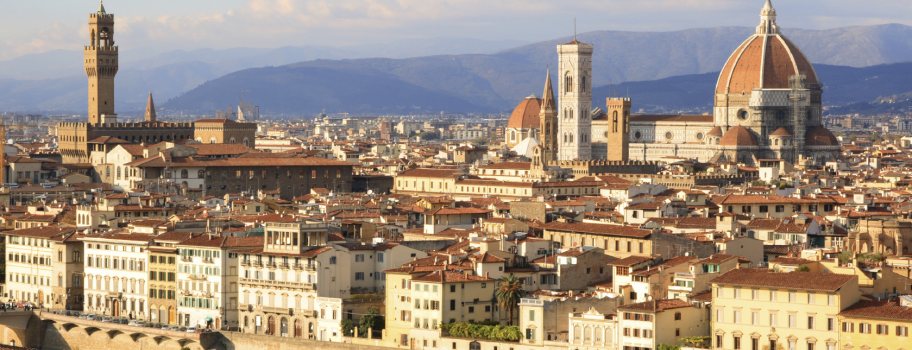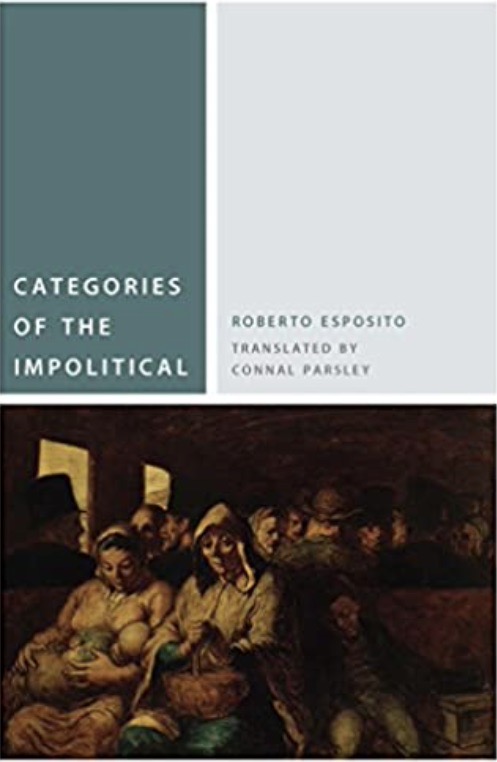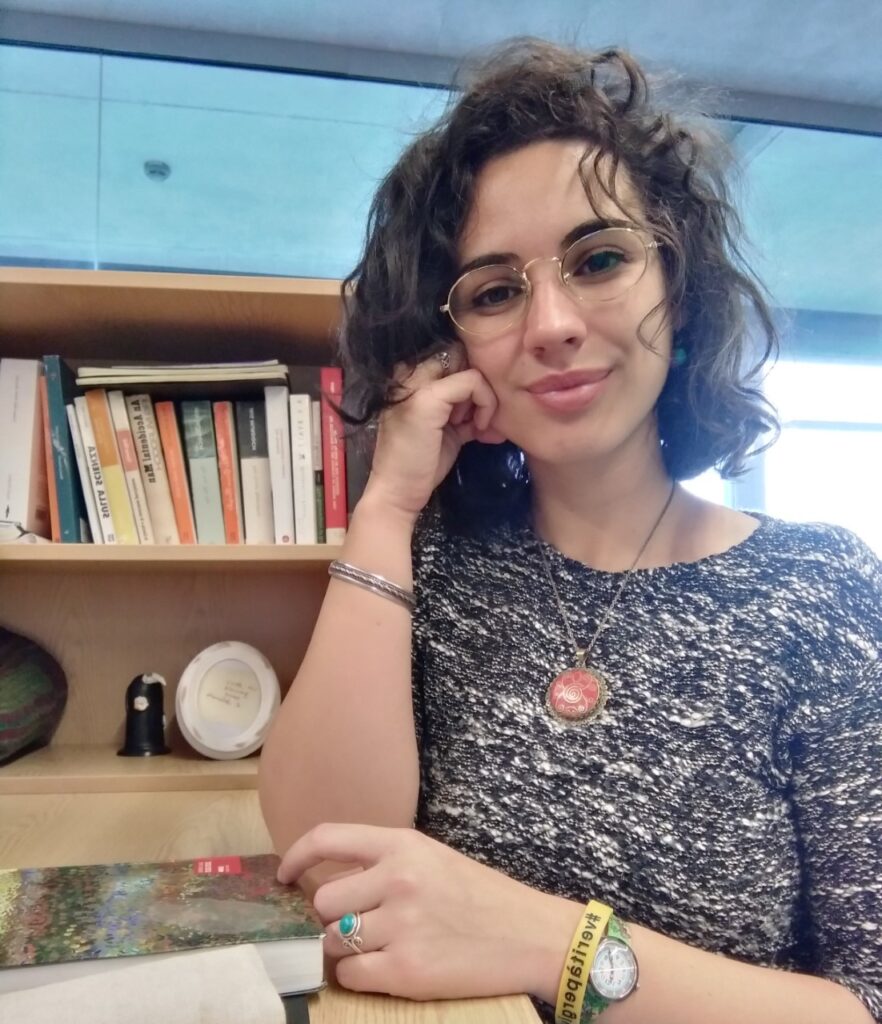More News From Italy: Books, Articles & Events
MICHELA DIANETTI
As highlighted in the last correspondence for Attention, there is a fil rouge (red thread) in Italian Weil studies concerning the shared, multifaceted, effort of tracing back a line of continuity within her philosophy. This contrasts with the idea that there are two distinct phases in her work divided by the caesura of a “mystical turn.” There is also a disciplined interest in Weil’s philosophy as a measure by which to evaluate certain current issues. As indicated by several of the works mentioned below, these two concerns continue to find expression in the writings of Italian Weil scholars.
De Leo on the Difficulty in Reading Weil
The Work of Simone Weil: An Educational Mission, by Daniela De Leo, paper based on the report presented in English language,at the XVII Congreso Internacional del Grupo de Investigación Escritoras y Escrituras, Universidad de Sevilla, held on 4th December 2020

“The Work of Simone Weil: An Educational Mission” by Professor Daniela De Leo aims to read Weil’s philosophy in terms of an educative intention. The difficulty in reading Weil lies in the work being fragmentary and non-systematic, but at the same time extremely coherent and continuous. The manifold areas of the human that Weil investigates spring from common roots that inform her reflections, guiding them constantly, like what De Leo calls her “educational mission.”
De Leo indicates two misleading interpretations of Weil’s work. The first tends to differentiate, making a dichotomy between the first years of her philosophical speculation and the ones after her spiritual turn, mystical and ascetic (a trend characterized by hagiographic traits, aiming to portray Weil and her philosophy as a special particular case). The second interpretation tends to equate Weil with others of her time, to find her an intellectual home.
De Leo, instead, aims for a more authentic picture of the woman-philosopher Simone Weil, navigating between coagulated mystification and an almost mythical representation of Weil’s person, questioning the well-known picture of Weil as a semi-saintly, austere, almost non-worldly figure.
The fragmentation and non-systematic that generated such misinterpretations of her thought are coessential to the nature of her thinking. In fact, De Leo indicates the problem of contradictions as an inevitable cause of misinterpretations. In note n. 23 p. 45 of her paper she writes:
Accepting the contradictions of Weil’s thought means not trying to trace a systematic nature in her philosophy. She herself had made the decision to escape from a world of abstractions and to find herself “among real men, good or bad, but of genuine goodness and badness,” not because Weil did not have the strength to systematize her theoretical elaborations, but in the broader sense of a thought that renounces its speculative possibilities by seeing in them an artificial and abstract way of problematising reality

In De Leo’s view, the greatest misinterpretation of Weil’s thought lies in “unilateral readings that privilege some aspects or circumscribe certain periods of Simone Weil’s thought” (p. 41) – e.g., hagiographical portrayals which depict her writings post-1937/38 as an isolated source, disconnected from the speculation of the 1930s. In line with Augusto del Noce (see previous correspondence) “the underestimation should be ascribed to a dominant reading of her writings oriented to see in them fragments of a great work of mystical poetry.” (p. 40)
In highlighting this common ‘interpretative limitation’, De Leo re-evaluates Weil’s 1930s writings to locate the origin of a pedagogical reflection that pervades Weil’s whole career, one “which resulted in guidance of souls, orientation towards the place where one can ‘become what one is’ and which draws the educational values of a thought in action from the Greek tradition and from the socio-political path.” (p. 42)

Contra to any kind of abstract intellectualism, Weil’s conception of ‘education’ is intimate with the practice of creating motives and changing meanings through the constant translation of truths.
Drawing on the letters exchanged between Weil and her students (collected in the Italian Edition Piccola cara… Lettere alle allieve, edited by Maria Concetta Sala (Marietti, 1998), reprinted in 2021), De Leo gives a non-hagiographic picture of Weil as a woman of her time, highlighting the role of values in her constant and necessary everyday teaching of what she learnt by attending to reality.
New Italian Edition of Weil’s 1930’s Writings
Incontri Libertari by Simone Weil. Edited by Maurizio Zani, published by Elèuthera, (I ed. 2001) 2021
Viewing the 1930’s work as “the lighthouse from which to illuminate Simone Weil’s thought” (De Leo, p. 42) also motivates a new edition of Weil’s 1930s writings on Marx, Nazism, and anarchism. Edited by Maurizio Zani for the first time in 2001, it was republished in 2021 by Elèuthera under the title of Incontri libertari (Libertarian Encounters). The book is divided into five sections: 1. On war, society, and the state; 2. On the critic of Marx; 3. On Lenin and Trotsky 4. On the techno-bureaucratic society; 5. On the German question.

For Weil the 30’s were years of action: from her work in the Alshtom factory to her commitment to syndicalism, to her education of the non-educated, and to her participation in the Spanish civil war where she joined the Durruti column. Zani’s introduction (‘Un pensiero inquieto,’ or “A Restless Thought”) defines Weil’s anarchism of those years as explicitly opposed to Marx’s historical materialism.
Weil is aware of the limits of syndicalism itself, which tends towards a hierarchical organization of internal power. Her reflections always focus on oppression and power, both on the level of individual human relationships and of the collective. This analogy between human psychology and the social and political spheres in Weil’s philosophy distances her from Marx. As Zani explains:
Anarachism [. . .] provided her with a scheme of interpretation of the history of societies and revolutionary processes very different from that of historical materialism. While Marx makes class hatred the psychological vector of instances of social transformation that can lead to revolutionary results, Weil appeals to the “spirit of revolt” which is inherent in the very nature of human beings.
(p. 11, Zani’s quotes here and below are my translation)
The spirit of revolt, as “the turning point” – Weil mentions this often in her Cahiers referring to the laws of physics – is seen as one of the terms of the contradiction of the human condition, as opposed to what Zani calls “condizione gregaria,” a contrasting natural human tendency “to submit passively to active minorities that deprive them of any possibility of expressing their freedom in full autonomy” (p. 11). As the turning point in nature is reached when matter strives for a new balance, the spirit of revolt emerges from its latency when the single human being is under strong political or economic subordination.
Weil thought that Marx’s reflections lacked attention to the human individual and their role in the course of history; he endorsed a model of history based exclusively on social relations of production. Zani explains that “the spirit of revolt, unlike the class struggle, makes the individual, and not a social group, the vector of history.” (p. 12).
Non-libertarian systems, such as bolshevism and Nazism, annihilate the individual in the name of deceptive collective ideals, and both, Zani writes, “leverage an exponential strengthening of the non-libertarian power of the State, an expansion of the public economic interest and, finally, the systematic and violent framing of individual consciences” (p. 13).
While many European parties, including the Italian ones, regarded the October Revolution (circa 1917) with admiration, Weil maintained a critical eye. She did not see the authoritarian outcome in Russia as a casual event, but the necessary result of the Marxist narratives developed by Lenin and then Stalin.
The essays collected in this edition highlight Weil’s need to understand (without simplifying) the fundamental causes of the Nazi seizure of power – thus the Nazi ability to attain compliance and take root in German society. Weil strove to investigate the reasons for the working class’s support for Hitler and to explore the responsibility of the Stalinist State in the rise of Nazism in Germany, and finally, to understand the traditional Left’s underestimation of the National Socialist phenomenon. Weil explicitly stood opposed to those hardened parties that were unable to see and interpret the underground forces that had been ready to emerge for some time. Consequently, Weil was always skeptical of joining any institutional party.

Nonetheless, Weil did not eschew political action; in fact, she took part on the side of the workers, moving ever closer to anarchism (in the Spanish Civil War, she joined the anarchist International group of the Durruti Column). She preferred, as Zani’s argues, militant-position opposition to the fascist idea of the state, replete with its militarism and patriotism – “anarchism [by contrast] speaks of singular subjects, of their needs, of their aspirations for freedom” (p. 19).
A New Political Ontology
Almanacco di Filosofia e Politica 4. Sull’evento. Filosofia, storia, biopolitica. Edited by Rita Fulco, Andrea Moresco, published by Quodlibet, 2022

The need to take an attentive look at the latent forces underpinning the events of history is at the core of the current study by the philosopher Roberto Esposito, one of the most influential Weilian thinkers in Italy. In the Alamanacco di Filosofia e Politica, Esposito gives space for a new political ontology that he labels “instituent thought,” which, as Rita Fulco explains, is neither post-Heideggerian in terms of the role given to the negative, nor “affirmatively constituent” in a post-Deleuzian or post-Spinozian fashion, but neo-Machiavellian: “capable of thinking about order through conflict (the affirmative through the negative)” (R. Fulco, “A political ontology for Europe: Roberto Esposito’s instituent paradigm,” Springer: Continental Philosophy Review, 2021, p. 371).
Issue no. 4 of Almanacco, edited by Rita Fulco and Andrea Moresco, focuses on the category of the “event,” analysed from an ontological, historical, and biopolitical perspective, and conceived, in Weil’s own fashion, not as a pure event disconnected from the processes and structural determinations of social relations.
This issue includes in the first Italian translation of Weil’s 1934 essay A Proletarian Uprising in Florence, originally written for the journal La critique sociale, then in Écrits historiques et politiques, published by Gallimard in 1960 (the English translation is included in Selected Essays 1934-43). Renowned Weil scholar Rita Fulco’s translation is followed by her essay on Weil and Machiavelli.
Weil reads the event of the insurrection, as narrated by Machiavelli, as “the earliest of all proletarian insurrections” (Selected Essays, 55) and his analysis as a class analysis ante litteram. She writes:
In spite of his apparent hostility to the insurgents, whom he mistakenly conceives as plunderers, his account of the insurrection, which we print below, is even more remarkable for its astonishingly precise relevance to our contemporary preoccupations than for its compelling narrative and beauty of style (Selected Essays, 62)

Fulco
Fulco notes that Weil read Machiavelli when she was studying for l’agrégation, and again during her 1937 trip to Italy. [See Weil, Viaggio in Italia, edited by Domenico Canciani and Maria Antonietta Vito (Catelvecchi, 2015) and chapter 13 “L’Italia, o della bellezza” in Gabriella Fiori, Simone Weil. Biografia di un pensiero (Garzanti, Milano, 1981). On the relationship between Weil and Machiavelli, Fulco references André Mansau, Simone Weil devant Machiavel, in Georges Barthouil, ed., Machiavelli attuale (Longo, Ravenna 1982), pp. 131-137; Gennaro Barbuto, Simone Weil e Machiavelli, in Alessandro Campi and Stefano De Luca, eds., Il realismo politico. Figure, concetti, prospettive di ricerca (Rubbettino, Soveria Mannelli 2014), pp. 173-190; Rosa Rius Gatell, Simone Weil lectora de Maquiavelo, and Carmen Revilla and Emilia Bea, eds., Simone Weil, Eudeba-Katz, (Buenos Aires 2018), pp. 77-98.]
During the 1930’s, Weil set out to offer elements of reflection for the fight against all kinds of fascism. It was thus necessary to note the division of the Left, the paralysis that had blocked revolutionary energy, and to understand its origin. It was urgent to reconstruct a genealogy that could identify the events and decisions that had robbed the working class of power and capacity for action; it was important to trace the past and its contradictions for what was yet to come, and to do so with a realism that Fulco and Esposito identify as Machiavellian. Fulco concludes:
The article published on «Critique sociale» was intended to be a signpost, a methodological indication, but also a political action, meant as a work of translation and “transposition”, which is, in my opinion, the constant and never abandoned character of Weil’s practice of thought and political practice.
(p. 321, my translation)
De Luca highlights Weil’s “educational mission” as an ever-present factor in her thought, which encompasses the two so-called phases (political and mystical) of Weil’s philosophical inquiry. Esposito also examines political commitment as a constant presence in Weil and underlines her closeness to Machiavellian realism. In Categories of the Impolitical, he writes:

Surely something changes; and quite visibly. But certainly not in relation to the interest in politics – [it was] very much alive until the last months before her death. Nor the analytic style which, if anything, as I said, becomes dryer, harsher, deliberately “Machiavellian”, as shown by various texts of the ’40s (and, first of all, the [essay], rightly famous, on the Iliad) [. . .]. Now what should be noted is that not only does this shift not determine “recessive” outcomes, of weakening, on the conceptual and semantic level; on the contrary, it implies, because of the resulting split, a strengthening, an intensification, of the gaze on an external object, and, for this same reason, [is] better focused.
(Categorie dell’impolitico, il Mulino, Bologna 1988, pp. 217- 218, my translation. For another English translation see Roberto Esposito, Categories of the Impolitical, Connal Parsley trans. (Fordham University Press, 2015).
Five New Works on Weil
- L’Europa di Simone Weil. Filosofia e nuove istituzioni . Edited by Rita Fulco and Tommaso Greco. Published by, Quodlibet Studio. Filosofia e politica, 2019. With a Preface by Roberto Esposito and an Introduction by Giancarlo Gaeta;
- Rita Fulco, Soggettività e potere. Ontologia della vulnerabilità in Simone Weil, Quodlibet Studio. Filosofia e politica, 2020;
- Rita Fulco, Simone Weil e l’immaginario bio-pneumo-politico de L’Enracinement, in ‘Imago Journal,’ no. 10 (Dec., 2017), pp. 114-135;
- New Italian translation of L’Enracinement: Il Radicamento, trans. by Maura Del Serra, (Le Lettere, 2021); and
- New Edition: Il Radicamento, ed. by Edoardo Schinco (Clinamen, 2022).
The first three works mentioned, one edited by Rita Fulco and Tommaso Greco, the others written by Rita Fulco, will be discussed in a future post on this site.
Continuing the discussion on the relevance of Weil’s thought for present times, we will discuss L’Europa di Simone Weil, a work that gathers most of the noted names in Italian and international Weil scholarship, including Gabriella Fiori among others.
To further explore Weil’s aversion to political parties, we will soon review Soggettivita e potere, which makes possible a discussion of the connection indicated by Alessandro Del Lago (L’etica della debolezza, Simone Weil e il nichilismo in AA. VV. Il pensiero debole, a cura di G. Vattimo e P. A. Rovatti, (Feltrinelli, Milano, 1983)) between Weil and ‘Weak Thought’ as conceived by Vattimo and Rovatti.
Fulco’s work will be explored further to frame, as she aims to do, Weil’s effort to provide Europe with a new (political, moral, and spiritual) imagery , which is, as Fulco states in Simone Weil e l’immaginario bio-pneumo-politico de L’Enracinement, the fundamental meaning of L’Enracinement. Weil saw the metaphysical cause of the European disaster in nuce in the image of uprootedness, and this is why Weil’s book continues to be so widely studied and translated.
Forthcoming
Three other works, to be reviewed in a future issue of this Journal, are:
- A re-print of Simone Weil, I Catari e la civiltà mediterranea, followed by Weil’s translation and comment on Chanson de la croisade albigeoise. Edited by Giancarlo Gaeta (Marietti, 1996 and 2018);
- Simone Weil, La rivelazione Indiana [“The Indian Revelation”], edited by Sabina Moser and Marco Vannini, Le Lettere, 2020). A collection of writings selected from Weil’s Cahiers on Taoism and the philosophies of India (Hinduism, Buddhism); and
- Emanuele Pili, Pensare l’ebraismo. Jaques Maritain e Simone Weil (Castelvecchi, 2022). Followed by the first Italian translation of Basi per uno statuto delle minoranze francesi (“Basis for a Law for French Minorities”).

Michela Dianetti is the Italy correspondent for Attention. She is a graduate student at the National University of Ireland (Galway). Her Ph.D. thesis is the first to compare the narrative works of Iris Murdoch and Elsa Morante. Its principal aim is to highlight the crucial influence Simone Weil’s philosophy had on the two authors, especially Weil’s idea of affliction. She is the Barbara Stevens Heusel Research Fund Fellow for 2022.
2 Recommendations
